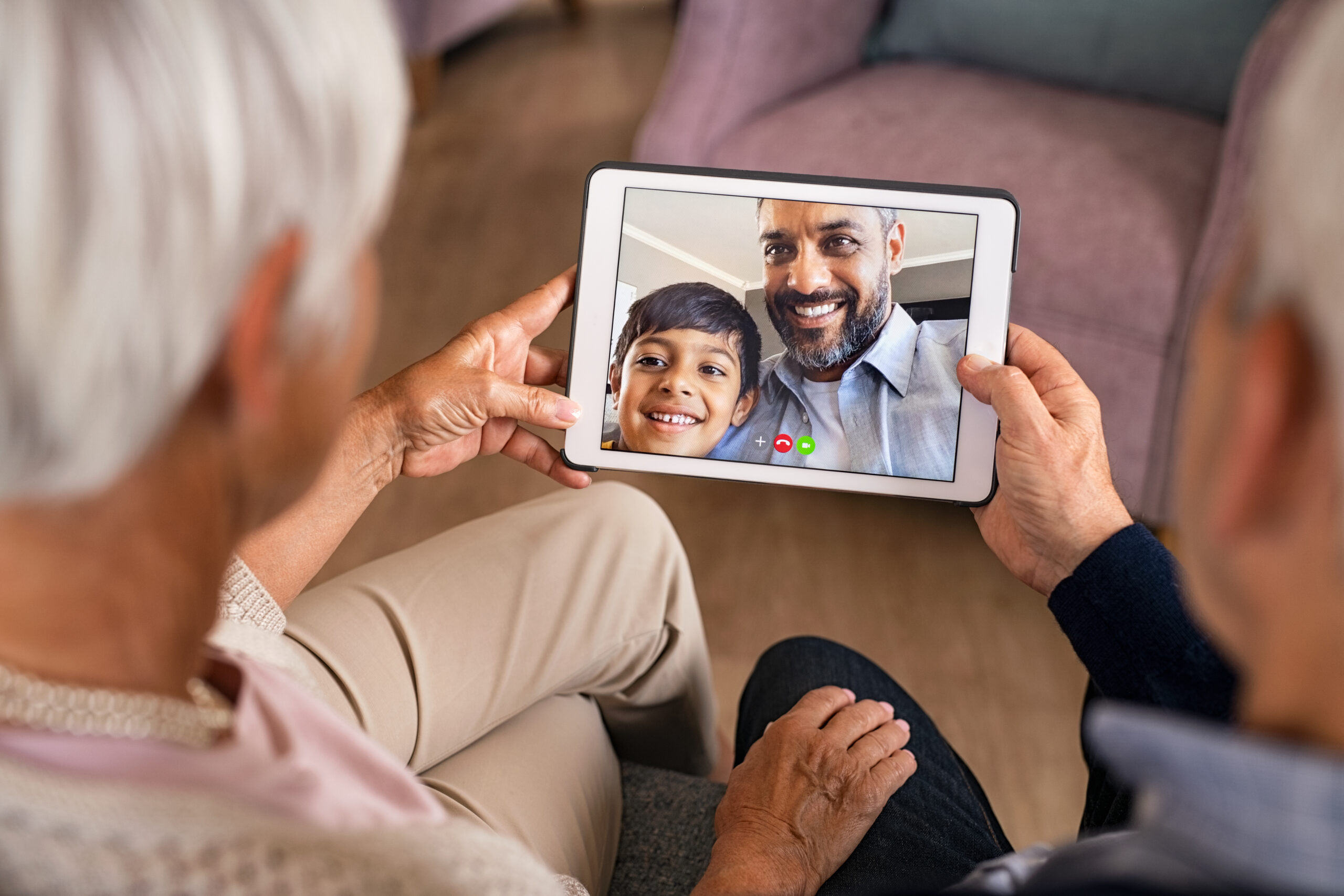In an increasingly mobile world, it’s common for families to live miles apart, sometimes even across different states or countries. While technology has made staying connected easier than ever, geographical distance can present unique and profound challenges when a loved one requires care. Long-distance caregiving is a reality for millions, and it often comes with a complex mix of emotions: guilt for not being physically present, anxiety about the unknown, helplessness in situations that feel out of reach, and a deep, unwavering love that drives the desire to help. This article aims to validate these feelings, offering both emotional support and practical guidance to navigate the intricate landscape of remote family caregiving. We understand that your commitment to your loved one is immense, and while the miles may separate you, your impact can still be profound. By adopting proactive planning, fostering open communication, and leveraging available resources, you can provide meaningful care and support, even from afar. This guide will equip you with strategies to manage care effectively, maintain your own well-being, and ensure your loved one receives the best possible attention, bridging the gap created by distance with thoughtful action and unwavering dedication.
Understanding the Landscape of Long-Distance Caregiving
Long-distance caregiving, at its core, refers to providing support and oversight for a loved one who lives a significant distance away, making frequent in-person visits impractical or impossible. This scenario is becoming increasingly prevalent due to various societal shifts, including adult children moving for career opportunities, elderly parents choosing to age in place in their long-time homes, or family members relocating for retirement. Common situations that necessitate remote caregiving often involve aging parents experiencing a decline in health, a relative recovering from a serious illness or surgery, or individuals with chronic conditions requiring ongoing management.
The emotional toll on remote caregivers cannot be overstated. The physical distance often amplifies feelings of worry and stress. You might constantly wonder if your loved one is safe, eating properly, taking their medications, or simply feeling lonely. The inability to drop by for a quick check-in or to personally assist with daily tasks can lead to immense frustration and a sense of powerlessness. Many long-distance caregivers report feeling a persistent undercurrent of guilt, believing they should be closer or doing more. It’s crucial to acknowledge these feelings as valid and to understand that you are not alone in experiencing them. This unique form of caregiving demands a different set of skills and a robust support system to ensure both the care recipient’s well-being and the caregiver’s mental health.
Building a Strong Support Network (Local and Remote)
One of the most critical elements of successful long-distance caregiving is establishing and nurturing a robust support network. This network acts as your eyes, ears, and hands on the ground, providing invaluable assistance and peace of mind. Start by identifying local support—friends, neighbors, and community members who are already involved in your loved one’s life. These individuals can offer informal check-ins, help with errands, or simply provide companionship. Don’t underestimate the power of community services; many areas offer senior centers, meal delivery programs, and volunteer networks that can provide structured support.
Leveraging technology is paramount for effective remote communication. Regular video calls can help you assess your loved one’s physical and emotional state more accurately than phone calls alone. Shared online calendars can help coordinate appointments and visits among family members and local helpers. Communication apps or group chats can keep everyone informed and facilitate quick updates. Establishing clear communication protocols—who reports what, and how often—can prevent misunderstandings and ensure everyone is on the same page.
There will inevitably be times when the needs of your loved one extend beyond what informal support can provide, or when you, as the primary caregiver, require additional assistance. This is where professional help becomes indispensable. Services such as respite care, professional in-home assistance, or companion care can offer crucial support, ensuring your loved one receives consistent, high-quality attention while also providing you with much-needed relief. For comprehensive and compassionate support in these areas, consider exploring options available at sharphomecare.com. They offer a range of services designed to support family caregivers and their loved ones, helping to bridge the gap when you can’t be there in person.
Practical Strategies for Remote Care Management
Managing care from a distance requires meticulous organization and a proactive approach. Here are several practical strategies to help you effectively oversee your loved one’s well-being.
A. Communication is Key
Effective communication is the cornerstone of successful long-distance caregiving. Establish a regular schedule for check-ins with your care recipient, whether daily, every other day, or weekly, depending on their needs and your capacity. Beyond direct communication with your loved one, maintain open lines with local support—be it a trusted neighbor, a friend, or a professional caregiver. Utilize communication tools that work best for everyone involved, such as group chats, shared online documents for updates, or even a simple email chain. The goal is to ensure everyone is informed about your loved one’s status, appointments, and any emerging concerns. Clear, consistent communication minimizes misunderstandings and ensures a coordinated approach to care.
B. Managing Finances and Legalities
One of the most daunting aspects of remote caregiving can be managing financial and legal affairs. It is crucial to have necessary legal documents in place, such as a Durable Power of Attorney for finances and a Healthcare Power of Attorney or Advance Directives for medical decisions. These documents empower a trusted individual (often a local family member or friend) to make decisions on your loved one’s behalf when they are unable to. Organize all important financial documents, including bank accounts, insurance policies, and wills, in an accessible yet secure manner. Cloud-based secure document sharing can be invaluable, but ensure all parties understand the security implications. Regularly review statements and bills to catch any discrepancies or potential issues early.
C. Health and Medical Coordination
Understanding your loved one’s medical conditions, medications, and treatment plans is paramount. Request permission to speak with their doctors and pharmacists to stay informed. If possible, attend medical appointments virtually or have a local advocate present to take notes and ask questions. Maintain a detailed medical history, including current medications, dosages, allergies, and contact information for all healthcare providers. This information is vital in an emergency. When hospital stays, medical emergencies, or situations arise where family caregivers need relief during hospitalizations, professional assistance can be a lifesaver. For dedicated support during these critical times, especially concerning hospitalizations, consider reaching out to thehospitalsitters.com. Their services can provide peace of mind, ensuring your loved one is never alone during a hospital stay, and offering crucial updates and companionship when you cannot be there.
D. Home Safety and Modifications
Assessing and ensuring your loved one’s home environment is safe and conducive to their needs can be challenging from a distance. Enlist local support to conduct a home safety audit, looking for potential hazards like throw rugs, poor lighting, or obstacles. Consider necessary home modifications, such as grab bars in bathrooms, ramps, or stairlifts, to prevent falls and improve accessibility. Many companies offer virtual consultations for home safety assessments and can coordinate installations. Simple assistive devices, like reachers or adaptive eating utensils, can also make a significant difference in maintaining independence.
E. Utilizing Technology for Monitoring and Support
Modern technology offers numerous solutions for remote monitoring and support. Remote monitoring devices, such as medical alert systems or smart home technology with motion sensors, can provide alerts in case of emergencies or unusual activity. Telehealth services allow your loved one to consult with doctors and specialists from the comfort of their home, reducing the need for transportation and making medical care more accessible. Medication dispensers with alarms can help ensure adherence to medication schedules. While these tools can be incredibly helpful, it’s important to balance technology with personal interaction and ensure your loved one is comfortable with their use.
Prioritizing Self-Care for the Long-Distance Caregiver
While your focus is undoubtedly on your loved one, neglecting your own well-being as a long-distance caregiver is a common pitfall that can lead to burnout and resentment. Recognizing and addressing caregiver burnout is not selfish; it is essential for your sustained ability to provide care. The emotional and logistical demands can be overwhelming, and the distance can exacerbate feelings of isolation. It’s vital to acknowledge that you cannot pour from an empty cup.
Setting boundaries is crucial. This might mean delegating tasks to other family members, hiring professional help, or simply learning to say no when your plate is already full. Manage expectations—both your own and those of others. You cannot be everything to everyone, and it’s okay to admit your limitations. Finding personal respite, even from afar, is paramount. This could involve pursuing hobbies, spending time with your own family and friends, or engaging in activities that recharge you. Connecting with other caregivers, perhaps through online support groups, can provide a sense of community and shared understanding. Hearing from others who face similar challenges can be incredibly validating and offer new perspectives and coping strategies.
Remember, seeking additional support is a sign of strength, not weakness. If you find yourself struggling to cope with the demands of long-distance caregiving, or if you simply need a break to recharge, professional services can provide invaluable assistance. Services like respite care or companion care can offer the relief you need, ensuring your loved one continues to receive excellent care while you take time for yourself. For comprehensive support tailored to family caregivers, including options for additional assistance, visit sharphomecare.com. Investing in your own well-being is the best way to ensure you can continue to be a loving and effective caregiver for the long haul.
Navigating Crisis and Emergencies Remotely
One of the most anxiety-inducing aspects of long-distance caregiving is the prospect of a crisis or emergency when you are not physically present. While you can’t prevent every unforeseen event, you can significantly mitigate stress and ensure a swifter, more effective response by developing a comprehensive emergency plan. This plan should be a living document, shared with your loved one, local support, and any professional caregivers involved.
Start by compiling a detailed list of all essential contacts: emergency services (911 or local equivalent), your loved one’s primary care physician and specialists, pharmacy, trusted neighbors, local friends, and any professional care agencies. Ensure this list includes their names, phone numbers, and a brief description of their role. Crucially, include information about your loved one’s medical conditions, allergies, current medications, and healthcare directives. This information should be readily accessible in a prominent location in their home, such as on the refrigerator or in a clearly marked binder.
Develop clear protocols for different types of emergencies. What should local support do if your loved one falls? Who should be called first if there’s a medical emergency? How will you be notified, and what information will you need to make decisions remotely? Consider having a designated local emergency contact who has a spare key to your loved one’s home and is authorized to act on their behalf in urgent situations.
In times of medical emergencies or hospitalizations, the stress on both the care recipient and the remote caregiver can be immense. During these critical periods, having professional support can make a significant difference. Services that provide relief during hospitalizations, ensuring your loved one has a compassionate presence and advocate at their bedside, are invaluable. For specialized assistance during hospital stays and medical emergencies, offering peace of mind and dedicated support, visit thehospitalsitters.com. Their services can help ensure your loved one is cared for and monitored, even when you cannot be there in person, providing crucial updates and companionship.
Conclusion
Long-distance caregiving is undeniably challenging, but it is also a profound expression of love and commitment. While the miles may present unique obstacles, they do not diminish your ability to provide meaningful support and care. By embracing proactive planning, fostering open and consistent communication, building a reliable local and professional support network, and prioritizing your own well-being, you can navigate this journey with greater confidence and effectiveness.
Remember, you are not alone. Millions of individuals share the same experiences, anxieties, and triumphs. Lean on available resources, both technological and human, and never hesitate to seek professional assistance when the demands become too great. Your dedication, even from afar, makes an immeasurable difference in your loved one’s life. Continue to seek knowledge, adapt to changing circumstances, and most importantly, extend compassion to yourself as you extend it to your loved one. The path of long-distance caregiving is a testament to resilience, resourcefulness, and the enduring power of family bonds.















